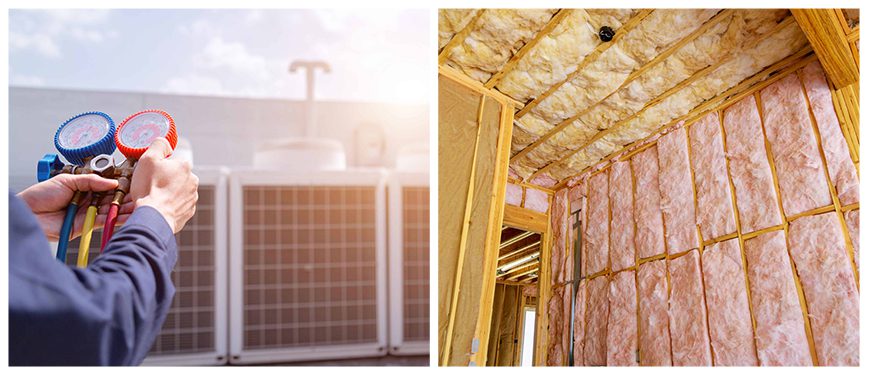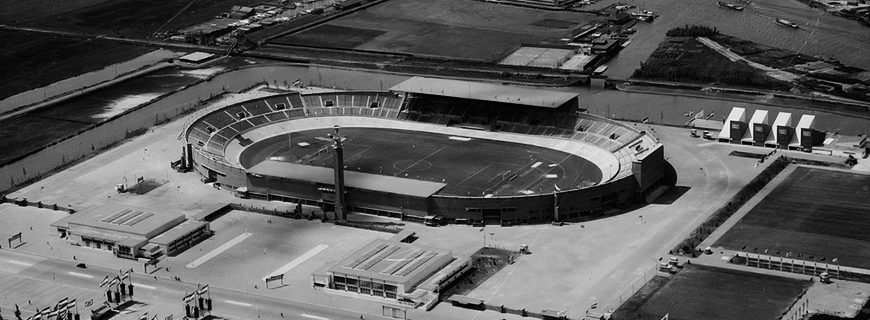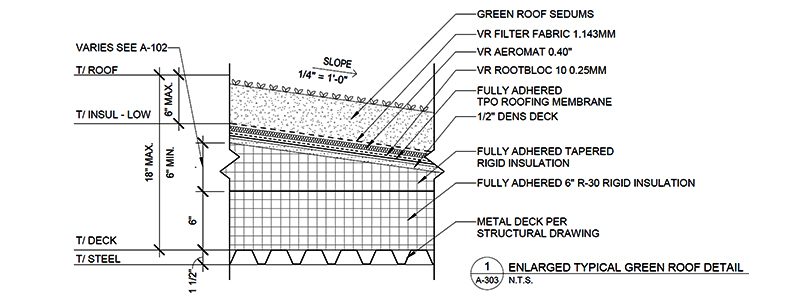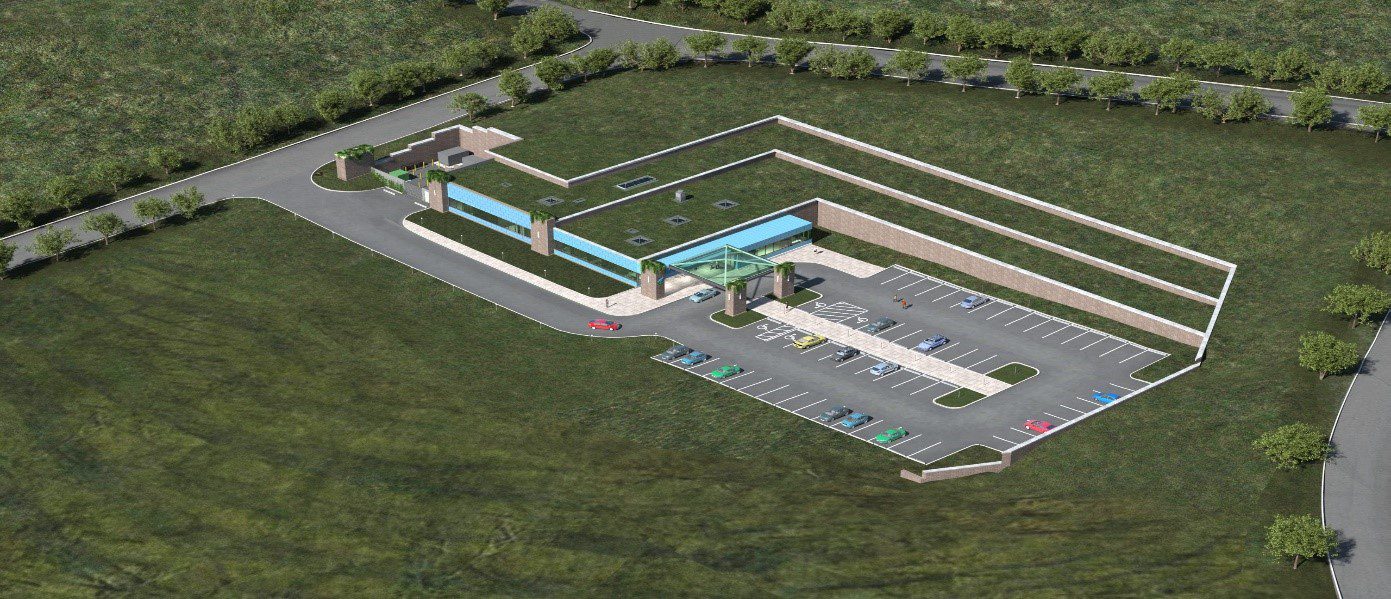
Net Zero Buildings
The Biden administrations submitted a long-term strategy to the UNFCCC in November 2021, officially committing the USA to net zero emissions by 2050 latest.
A large portion of the structures today utilize a great amount of energy-to keep lights on, cool the air, heat water, and power individual gadgets. In any event, installing solar systems won’t altogether counter the substantial energy loads. However, there are a few buildings that strike a balance, or even top the scales the alternate way! They are called Zero Energy Buildings. They deal with the feat by being extremely energy effective by saving 50-70% more energy than ordinary structures. In these ultra-high-performance buildings, the amount of energy utilized can be totally balanced by renewable energy generated on and around the building. At the point when conditions are not reasonable for energy generation, the structure will draw energy from the electrical grid to address its issues. And when conditions improve, the on-site renewable energy system will cover the building’s energy need and send the excess energy back into the grid to make the equilibrium. Throughout the year the structure offers back as much energy as it takes. At the point when zero energy ideas are applied to group of buildings, the advantages are shared and multiplied within that zero-energy community. These structures are likewise more solid, reasonable to construct and work and better for the environment. While these might appear as “buildings of the future,” new technologies are continually arising that make zero energy simpler and easier to accomplish today by the Architectural Design Firms. More than 100 organizations and associations have endorsed the World Green Building Council’s Net Zero Carbon Buildings Commitment, which looks to decarbonize the buildings sector by 2050 and get most of the way there by 2030. That would reduce the almost 40% of worldwide CO2 discharges presently contributed by the building structures. By becoming super-efficient and offering back as much energy as they consume, zero energy structures will have a significant impact in making a more competitive, energy-secure future.
Zero energy structures consolidate energy efficiency and renewable energy generation to burn through just as much energy as can be delivered on-site through renewable resources throughout a predetermined time span. Accomplishing zero energy is an ambitious yet progressively attainable objective that is gaining momentum across geographic districts and markets. Private business land owners have a developing interest in creating zero energy structures to meet their corporate objectives, and because of administrative commands, national government organizations and many state governments are starting to push toward zero energy building targets.
Advanced Energy Design Guides for Zero Energy Buildings – This series of guides, made through the industry collaboration with ASHRAE and other market pioneers, gives easy direction to accomplishing a zero-energy execution in different structure types. They incorporate arrangements of energy execution targets for all climate zones. Approaches to accomplish these energy targets are given all through and comprises quantifiable objectives, employing MEP design groups focused on that objective, utilizing energy simulation all through the plan and development process, monitoring what process choices affect energy use. The target group for this incorporates architects, plan engineers, energy modelers, contractors, office directors, building activities staff and facilities planning staff.
With sustainability and ESG (Environmental, social and corporate governance) factors being progressively significant for being competitive, net-zero carbon responsibilities are arising as “must-have” for large proprietors and administrators looking for finance, decrease risk and draw in first class representatives, occupants and customers.
How can Net Zero be Achieved?
At the point when the objective is net-zero energy, there are four main considerations during development: design, location, orientation, and the utilization of renewable energy.
Location: To build a net-zero building, several location factors such as climate, sun, wind patterns, temperature, rain patterns, etc. should be taken into consideration by architecture and engineering design firms.
Orientation: Factors that preserve energy are additionally significant. Other than harnessing the sun’s energy, you can preserve it by orienting your structure to maximize the advantage of the shade. In warm environments, this implies you’ll have to utilize the cooling less to keep your structure cool.
You can likewise situate your building to take advantage of natural winds. Utilizing natural resources to control your structure’s energy systems and diminish energy necessities, will conserve resources simultaneously.
Design: During the design phase of a net-zero building, it is important to select the best insulating materials so that the building is able to conserve as much energy as possible. Windows that are dual or triple pane effectively sealed can be a major factor in conserving energy.
Insulation is additionally an important factor to be considered as well which is rated in R-values. The higher the R-value, the better. Insulations such as fiberglass, wool, foam boards, cellulose, polystyrene, polyurethane, etc. provide an extra barrier between the interior and exterior of a building. Also, ventilation is particularly important in tropical climates.
ASHRAE, or the American Society of Heating, Refrigeration, and Air Conditioning Engineers, has created standards that apply to building design.
Utilization of Renewable energy: Active strategies such as photovoltaics, wind power, hydroelectric power, biomass, geothermal power, solar power, and solar thermal helps in reducing energy consumption during the building process. Net-zero energy structures respond in different ways to their nearby power grid.
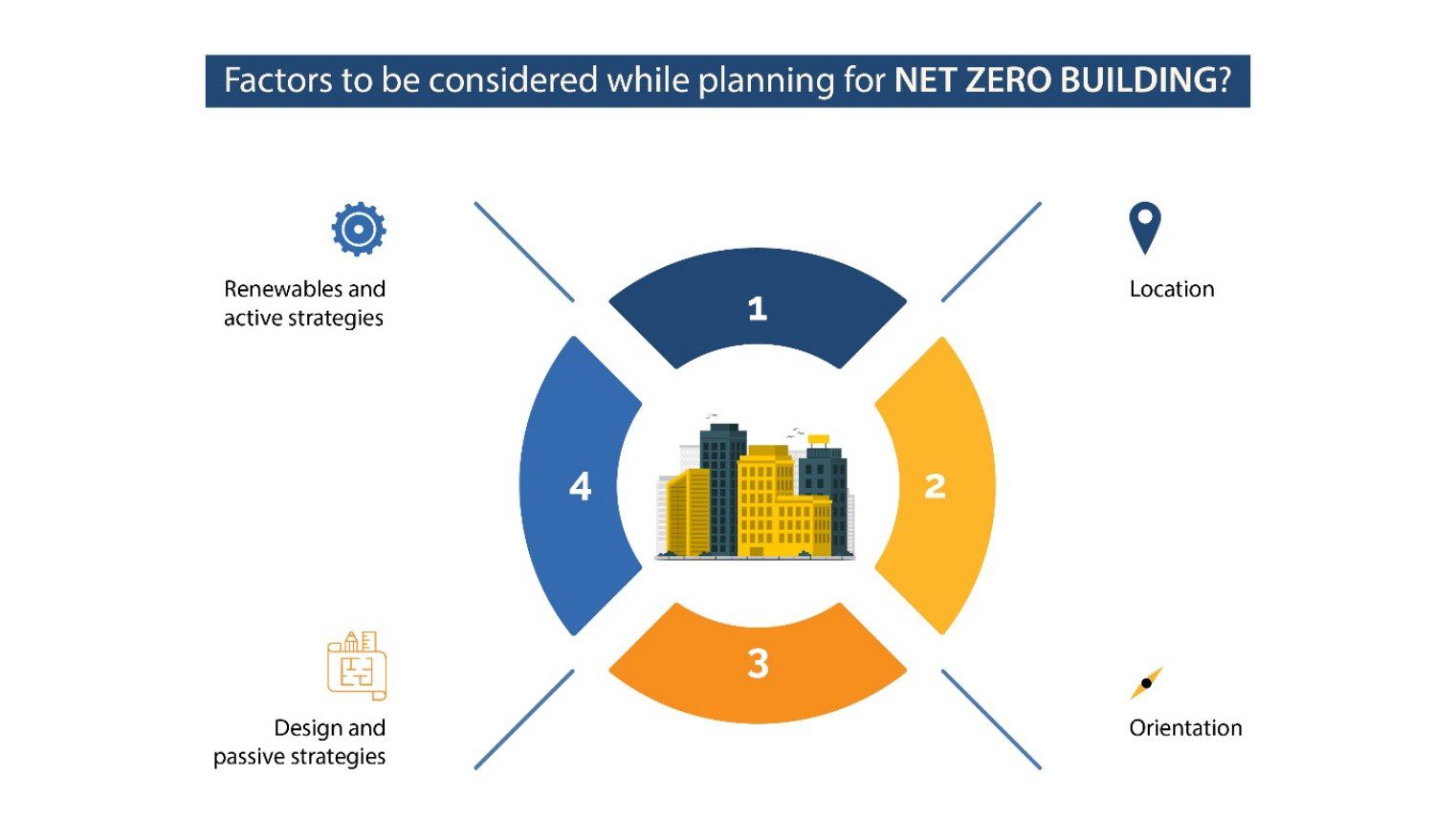
There are two primary plan procedures for net-zero structures – active and passive. Active processes center around the development of energy, which is normally refined by incorporating renewable energy systems. Solar systems and wind turbines are normal ways of counterbalancing the energy needs during both development and operation.
Passive process, center around diminishing energy use. Prudent design strategies, like expanding natural light and keeping up with consistent temperatures, are at the core of the aloof plan. With the scope of environments found across the world, proper insulation is a key design highlight. Ensuring precise air seals is critical to making an energy-tight structure.
The building’s location and direction are additionally critical net-zero variables. Structures in regions inclined to overcast skies will have restricted solar energy potential. In like manner, building oriented to utilize natural light can require 25% less energy. Furthermore, solar systems work best when pointing toward the south or west. All in all, structures in Aspen will have different specifications in comparison to those in Pueblo. Renewable energy sources offset structures’ energy use. In some cases, a few areas will not create an adequate sum to address the issue. This is the place where grid connections come in.
Connecting buildings to the grid
Colorado positions are seventh in wind generating capacity. However, all the areas of the state cannot produce renewable energy. That is the reason all structures equipped for creating renewable energy should expect to deliver more than they devour. The abundance can be channeled once again into the grid. Then, at that point, it helps power different structures and the encompassing regions. This assists with ensuring structures and networks stay powered regardless of changing nearby conditions. Net-zero structures are the future. To save the planet, the whole idea of building design should change. Energy conservation and renewal are critical to making the U.S a leader in net-zero.
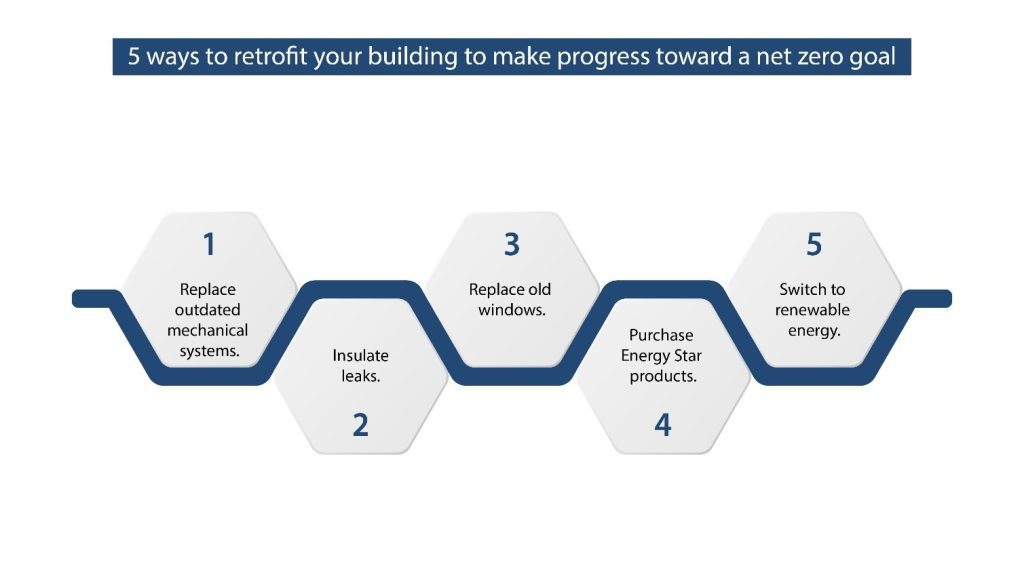
Conclusion
The challenges are huge, however, the techniques for meeting and conquering them are known. We absolutely need to speed up the strategies and make them cooperate to boost energy efficiency. If we do this for new and existing structures, we can meet the objectives we’ve set for 2030 and 2040. We can even meet those for 2050, as we work to identify new, longer-term objectives.


